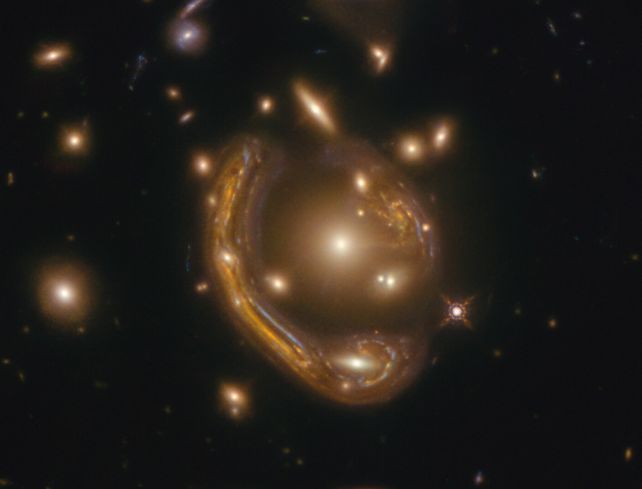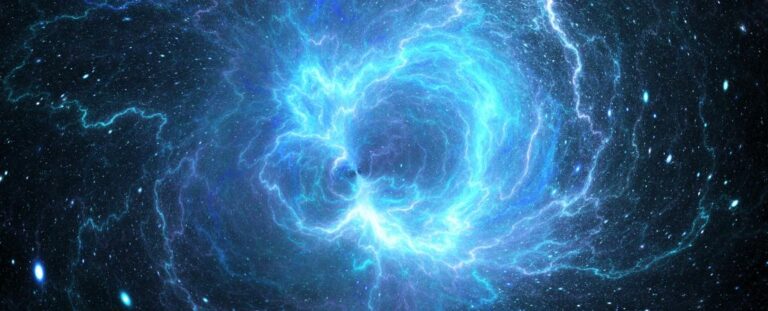Gigantic Dark-Powered Suns Possibly Detected during the Cosmic Dawn
Elusive Dark Matter Could Power Three Observed Entities during the Cosmic Dawn
In the depths of the Cosmic Dawn, three enigmatic entities have been sighted, potentially fueled by interactions between particles composed not of conventional stellar matter, but the mysterious substance known as dark matter. Through the utilization of data obtained from the James Webb Space Telescope, a team of theoretical astrophysicists has deduced that three galaxies, namely JADES-GS-z13-0, JADES-GS-z12-0, and JADES-GS-z11-0, exhibit characteristics consistent with colossal, solitary stars that derive their energy from dark matter heating, rather than nuclear fusion.
According to Cosmin Ilie and Jillian Paulin from Colgate University, along with Katherine Freese from the University of Texas, Austin, this theoretical framework could contribute to our comprehension of dark matter’s essence and potentially shed light on the origins of the Universe’s profusion of supermassive black holes.
Given the substantial gaps in our understanding of the Universe, the concept of dark stars could address numerous lingering questions.

To begin with, the enigma of dark matter persists. Although its precise nature eludes us, we are aware of its abundant presence, surpassing the amount of ordinary matter that comprises the visible aspects of galaxies, black holes, insects, and even baked goods. The evidence lies in the gravitational effects attributed to the existence of massive, undetectable entities dispersed throughout the cosmos.
Another conundrum lies in the fact that we have never directly observed the inaugural stars that illuminated the early Universe. While we have uncovered indirect evidence of their existence, the stars themselves remain elusive.
Additionally, the existence of supermassive black holes, which dictate the movements of galaxies orbiting them, presents a perplexing quandary. The process by which these objects, boasting masses ranging from millions to billions of times that of the Sun, attain such staggering sizes remains unknown.
Furthermore, since its operational launch in July 2022, the James Webb Space Telescope (JWST) has uncovered a multitude of massive galaxies in the early Universe. The rapid growth of these galaxies since the Big Bang poses an intriguing puzzle.
Enter dark stars, offering a compelling solution. While our understanding of ordinary stars is well-established—immense spheres predominantly composed of hydrogen and helium, with intensely hot and pressurized cores where nuclear fusion generates heat and light—dark stars provide a tidy resolution to the aforementioned mysteries.
According to Ilie and their colleagues’ hypothesis, dark matter stars would derive their power from the process of dark matter annihilation. In this scenario, dark matter particles, which possess the ability to self-annihilate, collide with each other, resulting in mutual destruction and the release of heat and light.
This model suggests that the early Universe contained a significant abundance of dark matter. These dark matter concentrations could have formed massive structures on the scale of a million Suns, ultimately canceling themselves out in a furnace of radiant heat equivalent to the brightness of a billion Suns.
The galaxies JADES-GS-z13-0, JADES-GS-z12-0, and JADES-GS-z11-0, observed within the first few hundred million years after the Big Bang, exhibit characteristics consistent with the anticipated properties of such dark matter-powered objects.
Over time, these dark stars would undergo gravitational collapse, transforming into supermassive black holes. This provides a plausible explanation for the scarcity of dark stars in the present era, as well as the abundance of supermassive black holes observed.
Additionally, this theory could clarify the absence of first-generation stars, even though stars nearly as old as the Universe itself can still be found within our galaxy. If dark stars indeed existed, the first-generation stars may still persist but possess markedly different characteristics.
It is important to note that this hypothesis remains highly theoretical and unverified, necessitating more extensive and detailed observations. The team’s calculations suggest that dark stars and early galaxies would exhibit distinct helium signatures, allowing for differentiation through their detection. While the James Webb Space Telescope (JWST) represents the most powerful space telescope currently available, obtaining such data may require the deployment of future telescopes.
The research has been published in the Proceedings of the National Academy of Sciences.
Do not forget to share your opinion with us to provide you with the best posts !




0 Comments